Fundamentals of Fashion Merchandising, History of Fashion
1/18
There's no tags or description
Looks like no tags are added yet.
Name | Mastery | Learn | Test | Matching | Spaced |
|---|
No study sessions yet.
19 Terms
Inventions that enabled faster textile production
Prior to the Industrial Revolution, textiles were hand made.
Inventions and discoveries that enabled faster production to meet the consumer’s desire for fashion include:
Power Loom (1785)
Cotton Gin (1793)
Spinning Jenny (1794)
1st Sewing Machine (1830)
Synthetic Dyes (1870)
Fashion Industry Origins
Slave produced cotton used domestically and exported
• Mid-1850s, department stores appeared
• Bon Marché- first department store in Paris.
• Department stores offered a greater assortment of goods, credit policies,
price awareness, and promotional techniques.
• Fashion production and distribution which meant greater profits
1910-1919
US became highly industrialized and entered WWI in 1917
Women’s Roles Change
European designers relocate to the US and European tailors saturate the market
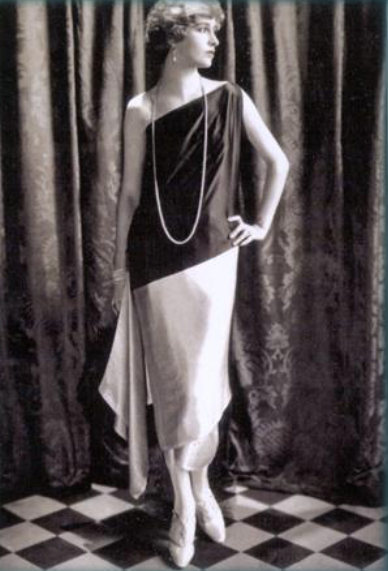
1920s
Age of Flappers
Bobbed hair, simple jewelry, cloche hats, gloves, and leather handbags
Clear lines, styles are less fussy
Image: Bias cut tunic over wrap-around skirt
New slim bustless, waistless silhouette
Roaring 20s until 1929 Crash
Birth of the assembly line production influences fashion and the arts
Artists like Picasso influence dressmakers such as Vionnet and Lanvin
Cubism and futurism makes ornamental design obsolete
Art Deco influence visible
Sexy lines bare more flesh
Harlem Renaissance
Rayon to the US
1930s
Genius in drapery and bias cut
No corset, but brings out the best in women’s curves
Skirts are longer, silhouettes leaner and closer to the body
Subdued elegance
Dress fit for a lavish soiree
The Great Depression
Time of practical fashion for most
Notable fashion: Chanel’s little black dress, jersey dress, and jacket
Women playing sports, leisure
Hollywood glamor is important during Great Depression
Vionnet, Lanvin, Chanel, Schiaparelli, Balenciaga, are influential in modern shapes
In the US, Mainbocher known for women’s leisurewear category
Latex (rubberized fabric) changed underwear garments with a two-way stretch
First nylon stockings were knitted and sold in 1938
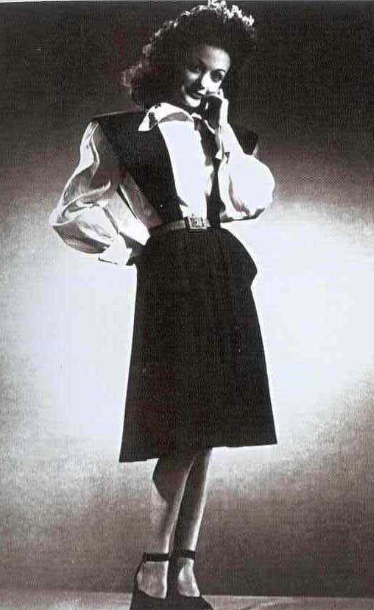
1940s
WWII and Becoming Prosperous
The skirt is shortened due to the shortage of fabric
Shoulders are padded, shoes are platform with soles made of cork, wood and even tire treads.
War Time
Rationing. People “make do”
Synthetics, recycled woolens, felt, taffeta, corduroy are most popular. Decorations are made from simple felt
Women in pants and trench coats
France no longer dictates because of World War II, American designers become popular, bringing in casual styles. (ex: Claire McCardell)
Demob suits
Zoot Suits
Utility Designs (War Time)
The maximum allowed cloth was 13 feet
The limit for cloth for a blouse was 3 feet
There were only 3 buttons allowed on any garment.
No cuffs on pants or sleeves were allowed
1950s
Golden Age of Fashion in the US
Unadulterated femininity. Image of the “New Look” in Berlin
Consumerism picks up
New materials
“Rebel” men
Noteworthy Styles of the 1950s
Trapeze dress was a turning point
The first Chanel suit in braid-trimmed tweed appears in 1954.
Givenchy launched his “sack dress.”
Cardin introduces the “bubble dress.”
Poodle skirts, twin sets, ballet shoes, and ponytails were popular for teenagers.
Evening apparel
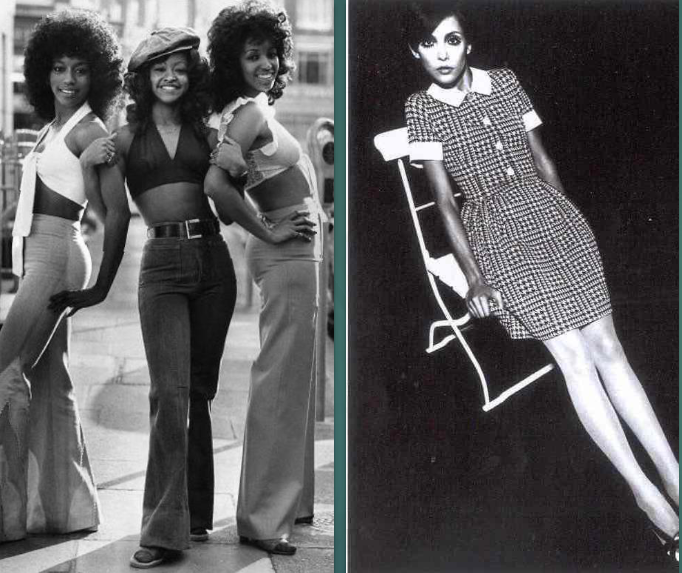
1960s, Swinging London
First generation to do their own thing
Women’s fashion, conservative then not
Men’s fashion, London influenced
Unisex clothing
Twiggy
Haute couture dominated the world’s fashion stage, but mass-produced fashion was making inroads in the US.
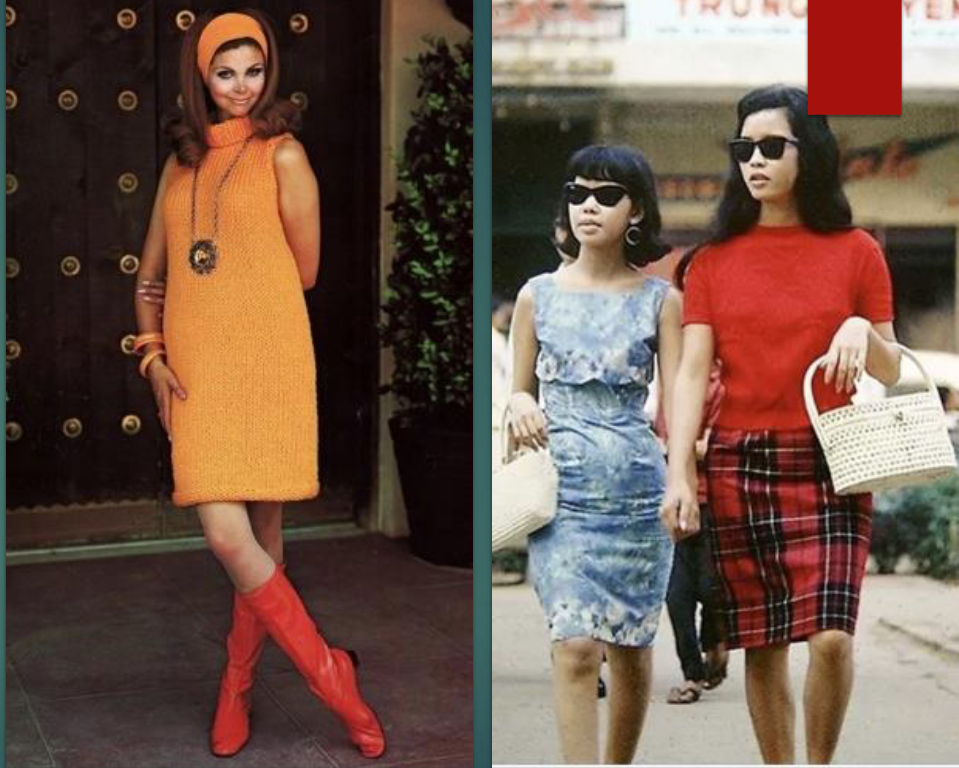
“Youthquake” in the 1960s
Swinging, joyous and mad about
color.
Knees
Mini skirts (1966) and short A-line dresses.
Square-toed or vinyl thigh boots
Pea coats and op art shiny raincoats
Styles are sweet and modern.
Mod dress pattern
1970s
“Anything Goes”
Cool, young, hippie styles mixing folklore and Indian
motives and flowers were all the rage.
Ethnic designs, disco (John Travolta), preppy, and punk styles
Popularity of DIY
Blurred lines and bright colors
Rising American designers:
Bill Blass, Ralph Lauren, Calvin Klein, Diane Von Furstenberg, Vivienne Westwood
Youth dictates fashion
Rise of subcultures towards the end of 70s
Fitness craze, Jane Fonda’s influence was huge
1980s
CONSUMERISM
Social and Cultural influences
Yuppies – Young Urban Professional
Wall Street & “Greed is good”
New Companies: Apple (1984), MTV (1981)
Music videos as art
Pop and hip hop
Variety exists but bigger is better
Madonna
Power and Excess
Power Dressing
Big shoulders, close-fitting skirts, and blouses with batwing sleeves
Inverted triangle shape
Dynasty (TV drama)
Smaller trend: commuter styles
Men began to have more interest in fashion than ever before
Gekko shirt & Wall Street
Striped shirt with a white collar and cuff
Yuppies preferred suits- Armani
Casual alternative:
Unstructured jackets with t-shirts
Miami Vice look
American Designers
Still an emerging process
French still dominate global markets
Japanese designers become popular
Rei Kawakubo
US Ready-to-Wear takes off
1990s
Globalization and Technology
Casual Fridays Start
Lycra
Active Wear
Ready to Wear Chains
GAP, J.Crew, Banana Republic
Lifestyle Brands
Fashion Becomes Big Business
Lots of variety, handmade fabrics, asymmetry and overlay
Rebelled against waste and fickleness
Direct contrast to 80s
Grunge aesthetic
Pearl Jam, Nirvana, Soundgarden
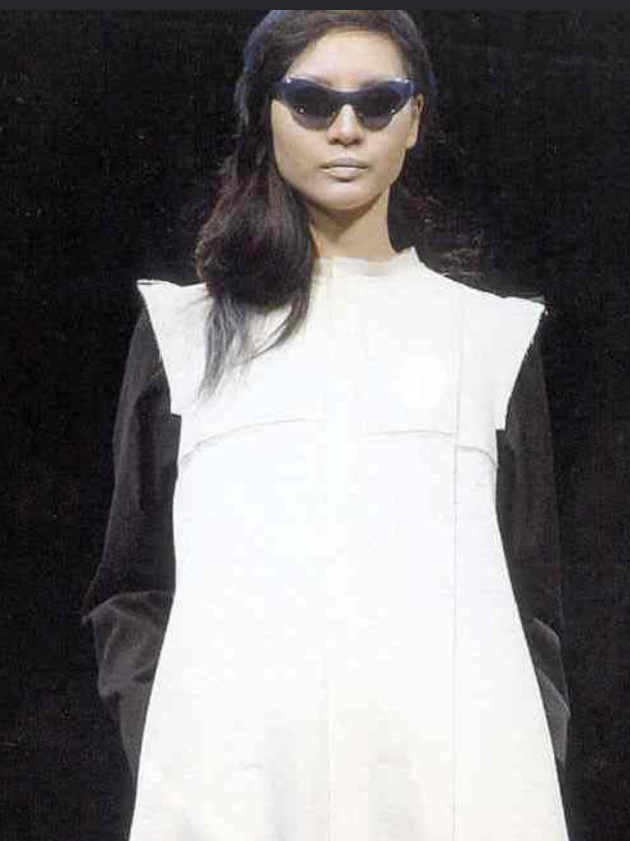
2000s
Age of globalization, emerging markets, million dollar conglomerates
Sex and the City
popularity of feminine, ladylike styles for high-powered women
New levels of individualism
Democratizing fashion
How does this affect the brand/designer??
Present Day
Speed to market, fast fashion
Quick response
Designers are now celebrities and vice versa
Subcultural prominence grows
America is a dominant fashion influence but its future is not certain